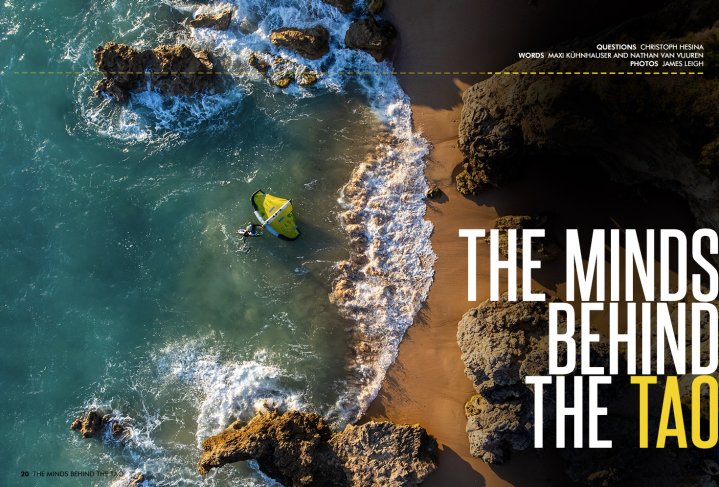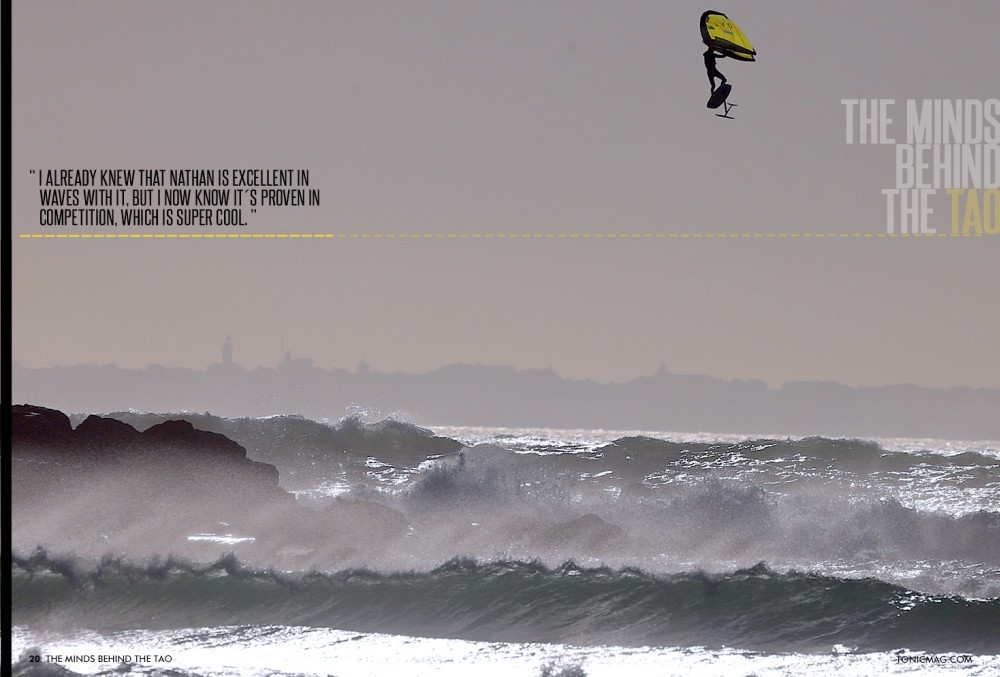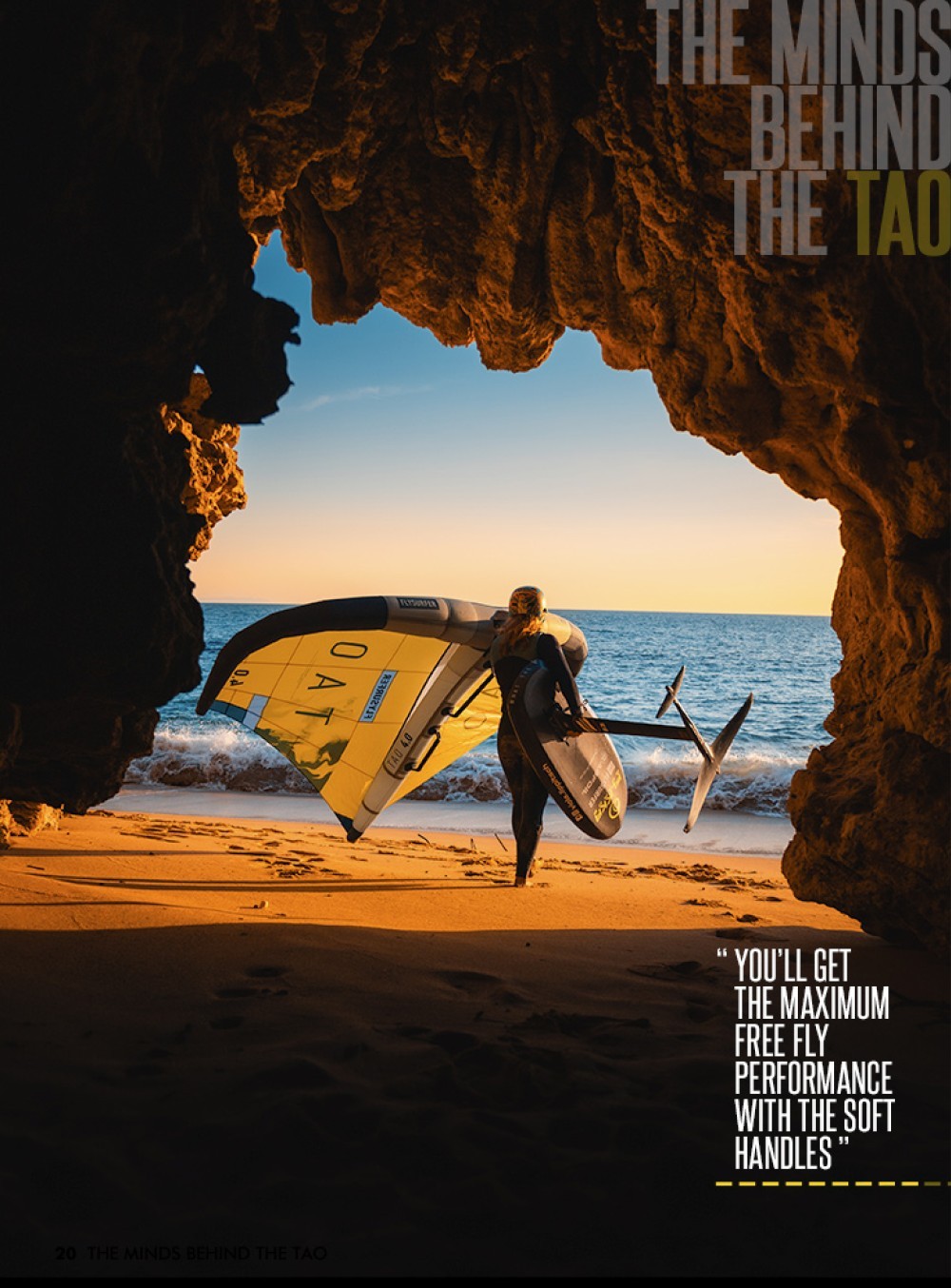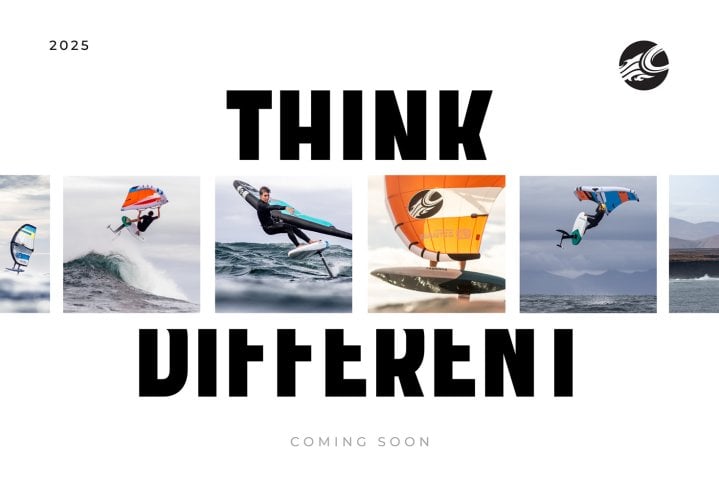
The Minds Behind the TAO
Issue 20 / Sun 19th May, 2024
FLYSURFER has achieved another milestone! Nathan van Vuuren, their South African team rider and shredder, stepped on the podium during the first Wingfoil World Tour while riding the TAO SH. In this feature, Christoph Hesina interviews Nathan, who helps design hydrofoils for Signature-Foils, and Maxi Kühnhauser, FLYSURFER’s L.E.I. designer, about their successful collaboration as the FLYSURFER team announces the release of the TAO RH. Find out more in this exclusive interview!
Hey Nathan, we're still excited about your podium win! We heard that you've been really happy with your setup during the Wingfoil World Tour. Can you tell us more about how you combined the TAO SH (soft handle version) with your Signature-Foil equipment and what advantages it gave you?
Nathan: It was an incredible opportunity to compete in this year’s wave stop in Cape Verde and use optimal equipment. The TAO SH performed spectacularly in our riding conditions, which weren’t always the best. The wind was very gusty, with lows of about 10 knots and gusts of 22 knots, so it would usually have been challenging to know what size to use, but the 4m TAO SH performed beautifully throughout the event due to its extensive wind range. While using the TAO SH, I realised how predictable and stable the wing is while riding on the waves, which allowed me to focus on my riding. The foil of choice was a new SPG setup that I have been testing, and paired with the TAO SH; I had the best combination of equipment for the waves and conditions during the event!
Servus Maxi, it was clear to us that our material mix was highly competitive even when compared to wings that cost twice as much. Additionally, the TAO SH was stable and provided Nathan with the freedom to make exceptional turns and score big points. Did you get a chance to watch the stream and see what we observed?
Maxi: First of all, congratulations to Nathan again on this incredible performance. Due to our testing sessions developing the TAO, I already knew that Nathan is excellent in waves with it, but I now know it´s proven in competition, which is super cool.
It was interesting to watch all the different types of wings and their equipment mix on the live stream. Wind range performance means low-end to high-end power and stability. Free-fly performance means how stable the wing is flying flagged out in straight riding and manoeuvres. The TAO performed well with its big wind range and stability in all conditions.
The wing's performance is not only related to the stiffness or weight of a material. It’s how you place the material on the wing and which kind of performance you want to give it. In some areas, you want the wing stiff; in others, you want some flex, making the wing more stable. The TAO is a good example of wings that use a not-that-expensive material, which can still be on top level and beat expensive wings.
Maxi, please explain the difference between a soft handle wing and a rigid handle/boom configuration.
Maxi: Both types of handle configurations have their advantages and disadvantages. The soft handle version is more forgiving in gusty conditions, which gives you a more stable feeling because the handles can flex more quickly than a human's reaction. It is also safer as you can’t hurt yourself on the handle or destroy your board. Due to this, you’ll get the maximum Free Fly performance with the soft handles as they have less weight on the trailing edge.
The rigid handle configuration gives you a more direct feel, which helps to pump the wing in the low end. When you push the wing away from you, the wing acts at the same time as a soft handle, where you bend the handle first until you get in contact with the strut. The same thing happens when you pull the rigid handles and are acting at the same time. For manoeuvres, it is also better for people who steer the wing more on the front hand because you can transfer momentum on the rigid handle. If you want to do freestyle tricks, rigid handles have his benefit, too, as you find the handle much more accessible with no look, and you can push the wing much more precisely into rotations.
Nathan, there have been numerous questions about your board, mast, and glider configuration. Please provide us with a summary of your Cabo Verde competition equipment.
Nathan: My setup for the event felt super dialled, from the foil to the board and wing. I was using an SPG custom wingboard that was 4’5 x 20 x 46 litres, and it had a more surf-friendly shape than a regular freestyle wingboard. The foil I was riding is a new unreleased SPG setup I have been working on for a while now, which uses an 80cm mast joined to a 515 cm2 front wing with a new 160 cm2 tail wing and a longer fuselage. Riding those firing waves with the TAO SH 4m and new foil setup was a real treat, as I could push hard and be confident in the equipment.
Nathan, I weigh 82kg and consider myself an average rider. What’s my ideal setup for riding lake or river swell?
Nathan: Riding lake and river swells can be fun with the right foil setup! I would recommend a slightly bigger foil setup with more glide for river swells, as they have less energy. For the 80-85kg range, something like a 1200cm2 – 1400cm2 would be a great starting point for riding the river swells, but you could go bigger or smaller depending on your skill level.
You always wear an obvious helmet or any protection gear. Do you also have a preparation routine or warm-up before a session, and most importantly, does red make you faster?
Nathan: The bright red helmet is vital to my quiver for any wing session! From personal experience, I believe that wearing a bright colour or red gives you a few more skill levels + extra speed (or maybe it’s just a myth), but I'm going to roll with it anyway!)
My pre-session warm-up routine usually involves getting psyched up and amped with friends before hitting the water, followed by tasty snacks like cookies or pretzels! I also generally pretend to stretch on the beach by waving my arms around and bending my knees for a few seconds before running into the water.
Maxi, accessibility was a major factor for the wing boom, but in my opinion, safety is right on top of the reasons to start wingfoiling. We both enjoyed the TAO SH version during our daily session. What makes the TAO SH such a good freeride wing?
Maxi: As you said, Chris, I enjoy the TAO SH more because it’s more comfortable on my hands and has a much more forgiving feeling in gusty conditions, which we mostly have at our lake. I also like to ride small waves at about 15 knots, where you usually use bigger wings. To ride these small waves in lighter wind, I prefer the best possible free-fly performance, which the TAO SH has. Sometimes, I ride with a harness, too, where crashes can hurt yourself and the board with rigid handles, which is another argument for using the TAO SH for more safety. I don’t have any problems doing manoeuvres with soft handles as I push the wing with my backhand, which is so easy. This means some people argue that the rigid handles are easier to manoeuvre, which is not valid for my riding style.
Nathan, on the contrary, you have been riding big swells and have had to overcome a massive shorebreak at his home spot. What is essential for wingfoiling in big waves?
Nathan: Before riding in bigger waves or even stronger conditions, the first step is being confident in your gear and skill level. When you go out riding in a bigger swell, you want to ensure you are riding on a smaller area foil + longer mast to have the most control possible. Also, wing choice is critical as you want something like the TAO, which flags out and behaves predictably while riding the wave, so you do not need to focus on controlling your wing. I suggest some protective gear, such as an impact vest and helmet, as a wipeout on a bigger wave has more consequences, so a bit of protective gear will give you more confidence.
Do you have any advice for riders about to start riding bigger swells?
Nathan: My advice to riders who want to start getting into bigger waves is to make sure you are comfortable with the gear you are riding, as being confident is essential as you start pushing your level. Finding the right spot to start riding bigger waves and another fellow rider is also crucial. When going out, a few things to consider is whether the launch is safe enough without a large shorebreak or rocks. Before going out, you want to make sure you know where the channels are and if there are any strong rip currents, so if anything does happen, you know the spot is layout. Once you have decided to go out, all that is left is to send it and have a fun session!
Insiders know you have had access to our newest addition, the TAO RH (rigid handles), for quite a while now and were chasing the SurfrApp height records. For whom do you recommend the TAO RH?
Nathan: I have had the privilege of participating in the testing and R&D for the new TAO RH and have loved it so far! The TAO RH has proven itself in stronger conditions when going for big air record attempts and freeriding, as the rigid handle option provides a great amount of wing control. I recommend the new TAO RH for riders who are looking for that more direct feel and control, which is provided by the rigid handles.
Maxi, can you tell us more about the handles?
For the new TAO RH, we tried to make the handles as light as possible and with maximum durability. The result was an oval carbon tube with an EVA grip and injection moulded reinforced winders. This construction has the best mix of durability and weight.
Maxi: The oval shape of the carbon tube is much more comfortable for long sessions than a round shape on your hands. The front handle on the strut is much longer than the back handle. With the long front handle, you can ride the wing with one hand and have many playgrounds to grab the handle in any kind of manoeuvre variation. The short back handle gives you everything you need optimised to save some weight towards the trailing edge for an excellent Free-Fly performance.
Where do you think the TAO RH is performing exceptionally well?
Maxi: This is for people who want a maximum direct feel for the wing and who like to do the manoeuvres more with the front hand.
For people who want to go for big air, you can adjust the angle of attack more precisely, which gives you some extra height.
This is for people who want to go into freestyle because it´s easier to grab the handles and spin the wing.
Nathan and Maxi, thank you for your time. What’s next? Is there anything on the horizon?
Both: We are super excited about the future as the sport of winging progresses so fast. What we are looking forward to most is pushing the limits of big air winging and developing race wings that will push the boundaries of what is currently possible!
Videos
By Tonic Mag
















